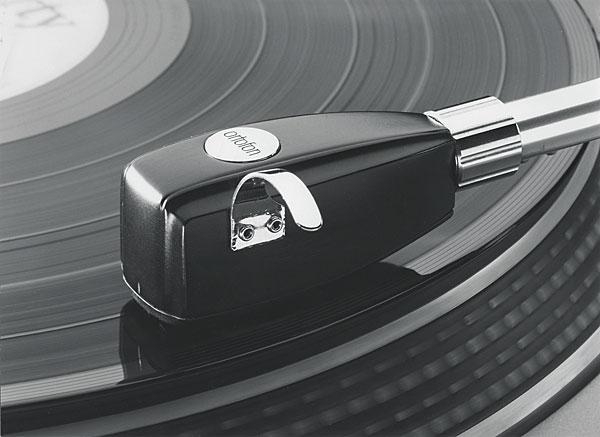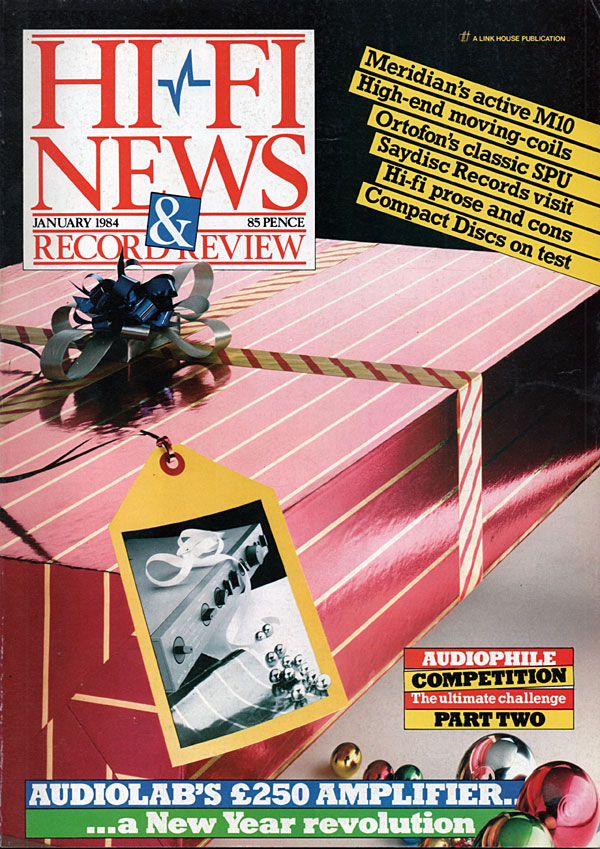Going For Gold

 Ortofon's SPU cartridge has reappeared. Ken Kessler gives it a whirl
Ortofon's SPU cartridge has reappeared. Ken Kessler gives it a whirl
Paranoia is not a condition to which I subscribed prior to entering the brotherhood of audio writers. Ignorant of my near-leper status, it came as something of a shock to find myself the only valve-loving, moving-magnet cartridge supporter in the immediate vicinity. Thankfully, editor John Atkinson tends to offer advice and make suggestions, rather than threaten my physical well-being for failing to embrace the solid-state, and so decided that a review of a moving-coil cartridge would be a subtle way of sowing the seeds for my conversion. And he knows my weaknesses well: anachrophilia.
Gilty Pleasures
'Ken, it's about time that you reviewed an historic cartridge, some milestone of a transducer' were his words. Goody, I thought. JA wants me to write about Denon 103 cartridges, some of the few MCs I can tolerate and which have been around long enough to qualify as anachrophilic. But no... 'You shall write about the Ortofon SPU Gold, direct descendant of the original SPU and the longest-running 'coil in continuous production.'
Blowing the cobwebs off a copy of the Hi-Fi Yearbook of pre-Beatle vintage, I sought to refresh my memory. lt became clear that my brief was to review a cartridge that served as the state-of-the-art for longer than any other single design, its security not threatened until it had been around almost a decade.

'You'll love it, Ken – it's the world's only valve cartridge.' That was but one of the cracks that preceded its arrival. Others included: 'You'll love it, Ken – it's got nothing over 10k' and 'You'll love it, Ken – it can't be used in lttoks' and 'You'll love it, Ken – it's got more colorations than a Jackson Pollock'.
Ah, what the hell; I can take a joke. Then I found out that the cartridge weighs 32g and its minimum tracking force is 3g. And, no, JA wouldn't loan me any LPs for the session. I stopped laughing.
The Ortofon SPU Gold is a slightly tweaked version of a cartridge that first appeared in 1959. lt differs mainly from its ancestors in that it now bears an elliptical tip of less than half the mass of the earlier version, and the folks at Ortofon are doing a Midas impersonation and coating everything in gold or substituting gold, full stop. Except, that is, for the internal leads, and the coil wires, which are now silver.
Little Change
I didn't bother to rip apart its integral headshell (with SME-type collar) to see if the cartridge body is gold-plated as stated in the literature, but I have no reason to believe otherwise for the cantilever, fingerlift, collar, and nameplate appear in an auric hue. And any company with the chutzpah to gold-plate so many non-sonic features of a cartridge's anatomy is highly likely to plate the bits that can't be seen.
Referring back to the Yearbook, I learnt that not a lot has changed beyond the cosmetics and the modern profiled stylus. Output has dropped from 0.5mV to a ludicrous 0.2mV, and impedance has gained an ohm, up to 3 from 2. Aah! What's in an ohm? Both share a tracking force range of 3-5g and the stated frequency range on both models is 20Hz-20kHz. Plus ça change...
Swarf City
But the price – and here's the rub – has gone from £23 in '62 to £269 in '84. Which creates a problem: do I treat this with the same suspension of values I'd exercise in light of its age, or do I treat it as a high-end MC, vintage be damned? A quick perusal of my earlier scribblings revealed that I had discussed the subject matter in terms of today's offerings, so I forgot that the SPU Gold was a 25-year-old design and treated it as a cartridge available right at this very moment, from people that could just as easily sell you an Asak or a Kiseki or any one of a hundred cartridges costing close to £300.

This was difficult to do, though. Here I had what some people claim is the first-ever moving-coil. And I knew that the Japanese – no slouches at MC production – buy every one of these they can lay their hands on, and that their devotion to the Ortofon SPU has kept it alive for over two decades.
Enough of the misty-eyed musings, though; a listening test was in order. But when a cartridge weighs in at 32g and only fits SME-type arms and I don't happen to own one of the three or four arms that will actually balance it out, a listening test is easier to say than to do. My original intention was to try this with as many of its contemporaries as possible, but I only got so far as turntable (Thorens TD-124), amplifier (the Radfords) and program material (EIIa Fitzgerald). I know that my trusty Radford TriStar speakers are an old-ish design, so that was okay for verisimilitude, but the arm choice was limited.
Indeed, the only arms in the house with the correct fitting were the Linn Basik LV-V and the Audio-Technica AT-1100 with optional S-shaped tube. The former arm was simply out of the question for at least 19,980 good reasons, so it was the A-T 1100 I turned to, with an extra-heavy counterweight and a good lump of modellers' clay serving as extra ballast.
It's a shame that Ortofon doesn't make a 1984 version of the SPU-GT, an SPU with built-in transformers, as I'd like to hear just how lousy MC boosters were back then (if anything could be worse than today's boosters, that is). Alas, this is not the case, so I used the only booster I could think of with enough gain, Ortofon's T30 transformer.
























































